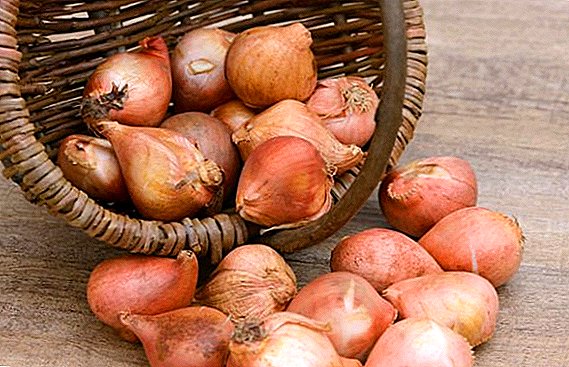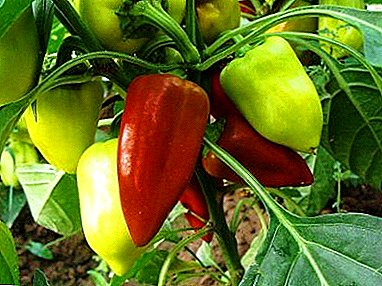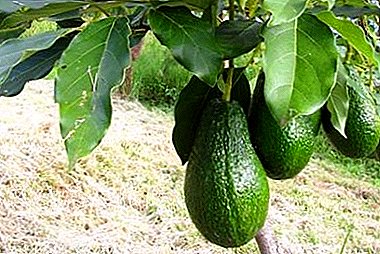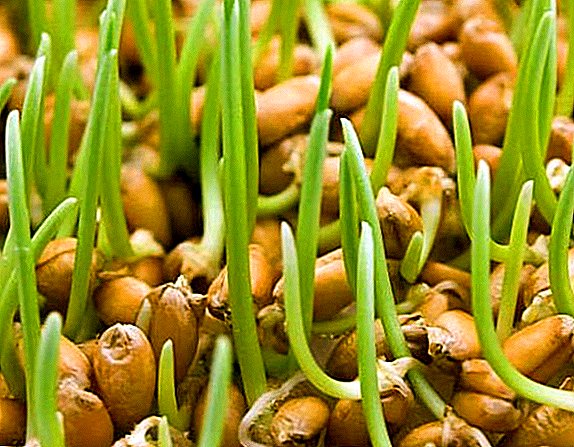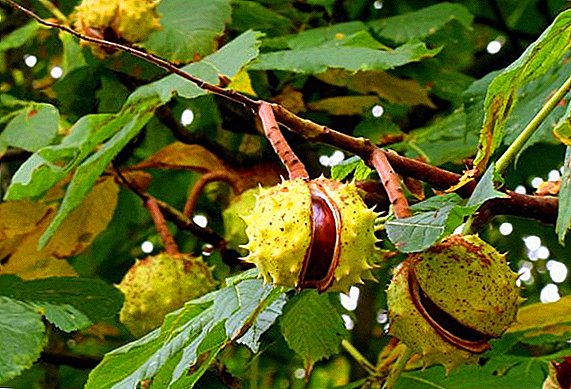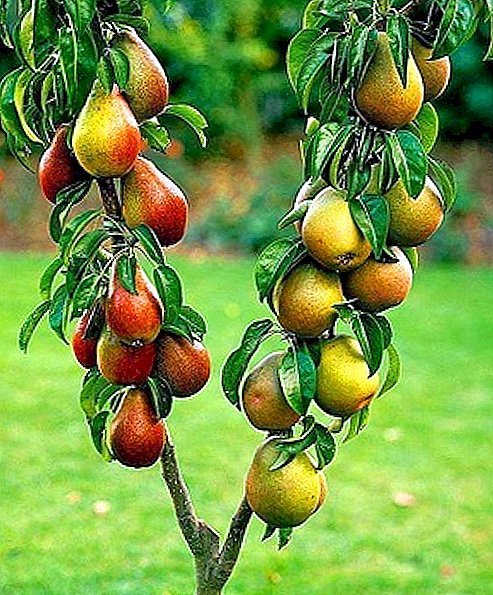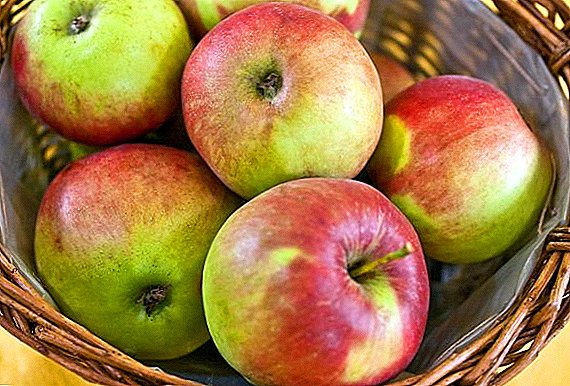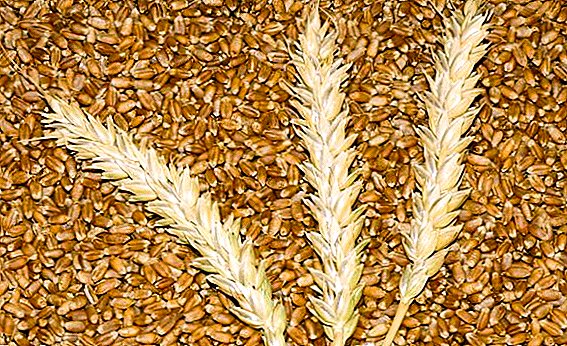 Wheat is one of the major food crops of the world. This grass has been cultivated since ancient times and is now distributed almost throughout the globe. This material discusses the biological properties of spring wheat, as well as the characteristic features of its cultivation.
Wheat is one of the major food crops of the world. This grass has been cultivated since ancient times and is now distributed almost throughout the globe. This material discusses the biological properties of spring wheat, as well as the characteristic features of its cultivation.
Description
This crop belongs to the family of cereals and the genus Wheat. This is an annual herbaceous plant, reaching one and a half meters in height. The inflorescence is an ear whose length can reach 15 cm. Grains differ - depending on the species, they can be short, elongated, ribbed, roundish, vitreous, mealy. They are rich in protein (up to 24%) and gluten (up to 40%).
In addition to spring wheat, the family of cereals also includes: winter wheat, maize, barley, rye, millet and sorghum.
It is believed that cultivated wheat appeared on the territory of modern Turkey, in the south-eastern part of it. Currently it is cultivated in Europe, the Middle East, Central and South Asia, the Far East, in many regions of Africa, North and South America, Australia. 
Features
Spring wheat is sown in spring, during the summer months it undergoes a full development cycle, at the end of summer or in the fall it is harvested. In addition, this form of wheat has a number of features that distinguish it from the winter form:
- it is a self-pollinating plant;
- the root system is not very developed, spring varieties need more nutrients and are less tolerant of acidic soils;
- different slow development;
- suffers from weeds more than winter;
- it is a rather cold-resistant culture, capable of tolerating short-term frosts, while soft varieties are more resistant to cold than hard ones;
- resistant to drought, especially hard; drought resistance increases in the presence of moisture in the soil;
- the optimum temperature for ripening is in the range of + 22 ° С ... + 25 ° С;
- as compared with the winter form, it is more demanding on the quality of the soil, black earth and chestnut soils are considered to be the most suitable for it;
- its seedlings are more vulnerable to external factors in comparison with the winter form - to pests, diseases, insufficient moisture, to excessively rapid drying of the top layer of the soil;
- leguminous crops are considered the best predecessors.
For ardent wheat, the main precursors are beans, beans, mouse peas, vetch, and lupins.
Kinds
All the many varieties of spring wheat are divided into two groups - hard and soft. These groups are significantly different from each other. Consider their features. 
Solid
For the growth of solid spring wheat, the continental climate is optimal, that is, with a relatively short, but hot and dry summer - these are, for example, regions such as the Orenburg region, Altai or Northern Kazakhstan. Hard varieties are more sensitive to soil droughts than soft ones, but they tolerate atmospheric conditions much better.
Did you know? In the European Union, solid wheat is the only agricultural product that is subject to customs duty.
Their yield is lower than the yield of soft varieties. Durum grains are especially rich in gluten and protein. Flour from such a grain is used for the production of cereals, high-quality pasta, in addition, it is mixed into flour for bread to improve its quality.  Spring hard varieties displayed a lot. Selection of varieties for planting depends on local climatic conditions, from its predecessor, it can be selected for a specific agricultural technology. Here are some common varieties:
Spring hard varieties displayed a lot. Selection of varieties for planting depends on local climatic conditions, from its predecessor, it can be selected for a specific agricultural technology. Here are some common varieties:
- "Kharkiv 39" - it is characterized by high glassiness (the grain seems to be transparent, and its fracture resembles chipping of glass), which is important for producers of cereals and high-quality flour;

- "Orenburg 10" - mid-season variety, resistant to drought, shattering and lodging;

- "Bezenchuksky Amber" - mid-season high-yielding variety resistant to lodging;
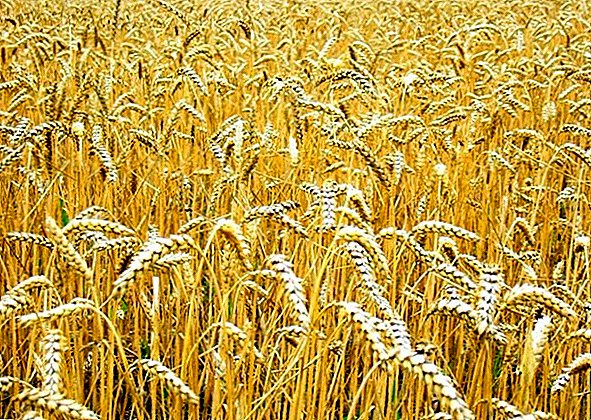
- Nashchadok - the variety is mid-season, high-yielding, adapted for intensive farming, withstands high doses of mineral fertilizers without glassiness reduction, but at the same time it is demanding of moisture;

- "Bezenchukskaya steppe" - mid-season, drought-resistant, moderately resistant to lodging, high-quality pasta is made from flour.
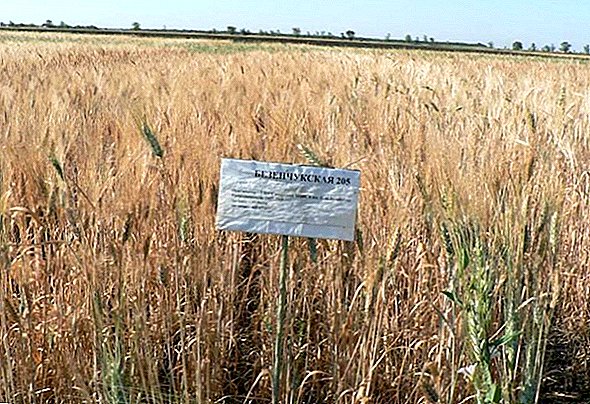
Soft
Soft spring wheat is preferred to be grown in regions with guaranteed moisture, since it does not tolerate atmospheric drought. It is less demanding on soil fertility and less sensitive to weeds.
Its grain contains less gluten, the flour consistency is thinner and crumbly compared to durum wheat flour. Such flour is used for confectionery, and also bakery products. In the production of bread in flour from soft varieties usually mixed with flour from solid varieties, otherwise the bread quickly stale and crumble.  Varieties of soft spring wheat there is a huge amount, they are adapted to the most different climatic conditions and soils. Some of them are listed below:
Varieties of soft spring wheat there is a huge amount, they are adapted to the most different climatic conditions and soils. Some of them are listed below:
- "Irgina" - early ripe and high-yielding variety used in the southern regions, resistant to lodging;

- "Prioksky" - early ripe, high-yielding, however badly transfers drought and is subject to bacterial diseases;
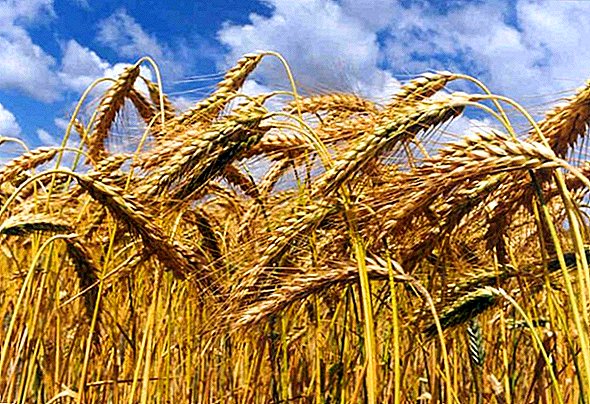
- "Lada" - early ripe, high-yielding, resistant to powdery mildew, however, it is prone to lodging and does not tolerate prolonged rains;

- "Daria" - early ripe, high-yielding, resistance to lodging and powdery mildew is average, but at the same time it is often affected by brown rust;
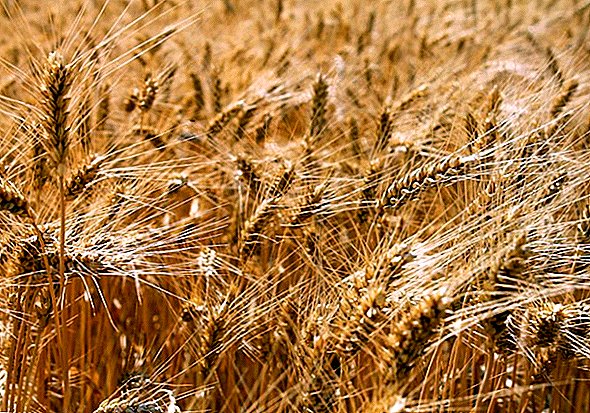
- "Dobrynya" - mid-season, resistant to lodging, moderately resistant to drought, excellent bakery qualities, but susceptible to dusty and hard smut, as well as brown rust.
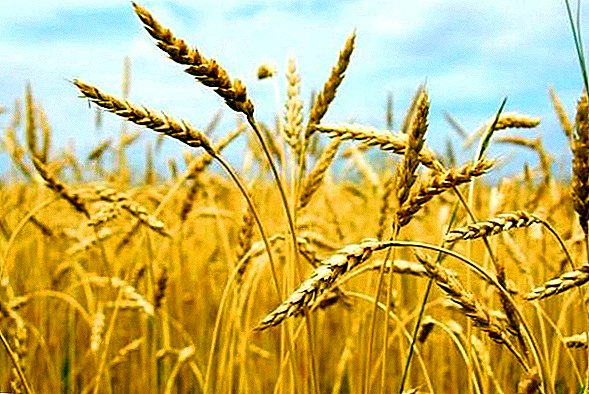
Growing up
The process of growing spring wheat is quite time consuming. The technology of its cultivation provides for strict adherence to certain rules, as well as high technological discipline.
It will be useful to learn about how to sow, feed and collect winter wheat.
Pre-Tillage
It is recommended to treat the soil for spring wheat immediately after harvesting the predecessor. The procedure is carried out in two stages: autumn (autumn) and pre-sowing (spring). If the preceding plant was perennial grasses, in the process of winter processing, the soil is first disked, and after 14 days - plowing plowing.
In the case of other precursors, such as winter crops and legumes, tillage may be the same, but in areas prone to erosion, landless plowing is replaced by a tundish.  Pre-sowing preparation begins with harrowing - this prevents excessive evaporation of soil moisture and contributes to the warming of the soil. This process is called "moisture closing". Then carry out the cultivation of the soil to a depth of 10 cm
Pre-sowing preparation begins with harrowing - this prevents excessive evaporation of soil moisture and contributes to the warming of the soil. This process is called "moisture closing". Then carry out the cultivation of the soil to a depth of 10 cm
Important! Specific agrotechnical methods depend on the predecessors, the state of the soil, the presence of slopes, the presence or absence of one or another agricultural equipment.
Sowing
For this procedure, it is important to prepare the seed, the time and depth of sowing, as well as the method of sowing. Let us consider these components in more detail. 
Seed preparation
The procedure of disinfection of seeds with the help of treaters is mandatory. To do this, use drugs such as "Vitavaks", "Fundazol." In addition, it is highly desirable to warm the seeds before sowing. This is done outdoors in direct sunlight for 3-4 days or in a dryer with active ventilation for 2-3 hours at a temperature of about + 50 ° C.
Important! Too late sowing of spring wheat leads to a drop in its yield by at least a quarter.
Seeding dates
Sowing time depends on the climatic features of the region. For example, in Western and Eastern Siberia, this is approximately May 15-25, in most regions of European Russia it is mid-to-late April. In any case, spring sowing begins immediately after the ripening of the soil. 
Sowing depth
This parameter depends on the type of soil. For light soils, the sowing depth averages 6 cm, in the steppe it can increase to 9 cm, for heavy soils it decreases to 3-4 cm.
Seeding methods
The choice of sowing method depends on local features. The narrow-range method is the most common, although it increases the seeding rate, but also increases the yield by 2-3 centners per hectare. Often used ordinary and tape methods. The cross method is practically not used due to the tightening of planting dates, excessive fuel consumption and excessive tamping of the soil during its use.
Care
In arid regions, soil rolling is practiced after sowing. To do this, use rollers of various designs that crush lumps and somewhat level the surface of the field. When a soil crust is formed after rains, harrowing is used to destroy it.  An important component of crop care is weed control, since the yield of this crop suffers greatly because of them. The greatest efficiency is achieved when this struggle is conducted taking into account the species composition of weeds, their numbers, and the characteristics of the local climate.
An important component of crop care is weed control, since the yield of this crop suffers greatly because of them. The greatest efficiency is achieved when this struggle is conducted taking into account the species composition of weeds, their numbers, and the characteristics of the local climate.
Depending on these factors, general herbicides can be used (“Hurricane”, “Roundup”), preparations against wheat grass and dioecious weeds (“Attribute”), against one-year dicotyledons (2.4 D and 2M-4X), etc.
When pests appear, after their number exceeds the threshold of harmfulness, crops are treated with insecticides. To do this, use drugs such as "Decis", "Decis-extra", "Sumi-alpha", etc.  For spring wheat the most dangerous diseases such as septoriosis and spike fusarium, others may occur. They fight with fungicides - it can be, for example, Rex Duo, Carbezim or Tilt.
For spring wheat the most dangerous diseases such as septoriosis and spike fusarium, others may occur. They fight with fungicides - it can be, for example, Rex Duo, Carbezim or Tilt.
Sometimes spring wheat is cultivated under irrigation. Most often this is practiced in the cultivation of hard varieties. Irrigation mode is selected depending on weather conditions and soil quality. Irrigation in combination with the correct application of fertilizers can significantly increase crop yields.
Treatment
Since spring wheat is demanding on soil fertility, fertilizers are widely used in its cultivation. Used mainly nitrogen in combination with phosphorus-potassium fertilizers. Their number varies widely for different regions - it may depend on the soil, variety, climate, predecessors.
When growing spring wheat, nitrogen fertilizers are widely used: ammonia water, calcium nitrate, nitrophoska, nitroammofoska and "Azofoska".
On average, 35–45 kg of nitrogen, 17–27 kg of potassium, and 8–12 kg of phosphorus are consumed per ton of grain yield and ton of straw. In addition, organic fertilizers are also used: manure, compost, peat. They are brought in the fall, when the soil is treated in the autumn. In the same period, ammonia forms of nitrogen fertilizers are introduced: ammonia water, anhydrous ammonia, etc. 
Diseases and pests
As mentioned above, of the diseases for this culture, septoria and fusarium of the ear are most dangerous. It is less susceptible to powdery mildew, brown and stem rust, snow mold, root rot. Various fungicides are used to combat them (you can read about them in the “Care” section).
To combat wheat diseases, use fungicides such as Prozaro, Alto Super, Bravo, Folicur, Fitolavin, Albit, and Tilt.
Among the pests, a harmful turtle, bread beetles, a grain scoop, thrips, Swedish and Hessian flies, etc. can seriously damage crops. Insecticides are used against them: Detsis, Detsis-extra, Sumi-Alpha, and others.
Agronomists are encouraged to learn how to get rid of thrips.
Productivity and cleaning
Yield indicators are highly dependent on weather conditions, climate, quality of soil and seed material, wheat varieties, careful adherence to agrotechnical methods throughout the entire cycle of cultivation of this crop.
Did you know? By the area of crops (approximately 215 million hectares) wheat surely holds the first place in the world. At the same time, about 90% of the world's crops are soft varieties. The leaders in the cultivation of this culture are China, India, Russia, USA and France.
For example, the average yield of soft varieties "Daria" is 30-35 q / ha, and the maximum - 72 q / ha. The average yield of hard wheat "Bezenchukskaya steppe" - 17-22 c / ha, the maximum reaches 38 c / ha.  It is important to start harvesting in a timely manner, as the crop over the course of 10-12 days reduces the yield and significantly reduces the quality of the grain. When harvesting can be used as a direct combining, and a separate method. The essence of the separate method is that the reapers mow the stem, and the wheat is collected into rolls.
It is important to start harvesting in a timely manner, as the crop over the course of 10-12 days reduces the yield and significantly reduces the quality of the grain. When harvesting can be used as a direct combining, and a separate method. The essence of the separate method is that the reapers mow the stem, and the wheat is collected into rolls.
In rolls, it dries out and matures for several days, then rolls are removed by a combine. If the weather is unstable, use direct combining - with this method, the loss of grain is reduced, but its dirtiness increases.  After collecting the grain is processed on the current: cleaning and drying. For this purpose, various grain cleaning and grain drying complexes are used. In some cases, drying is not required, then limited to cleaning the grain.
After collecting the grain is processed on the current: cleaning and drying. For this purpose, various grain cleaning and grain drying complexes are used. In some cases, drying is not required, then limited to cleaning the grain.
Summing up, it can be noted that the cultivation of spring wheat will require strict adherence to agricultural technology. In addition, this culture is sensitive to soil quality and weather conditions. If all these factors are taken into account and the weather is favorable, you can count on a great harvest.












